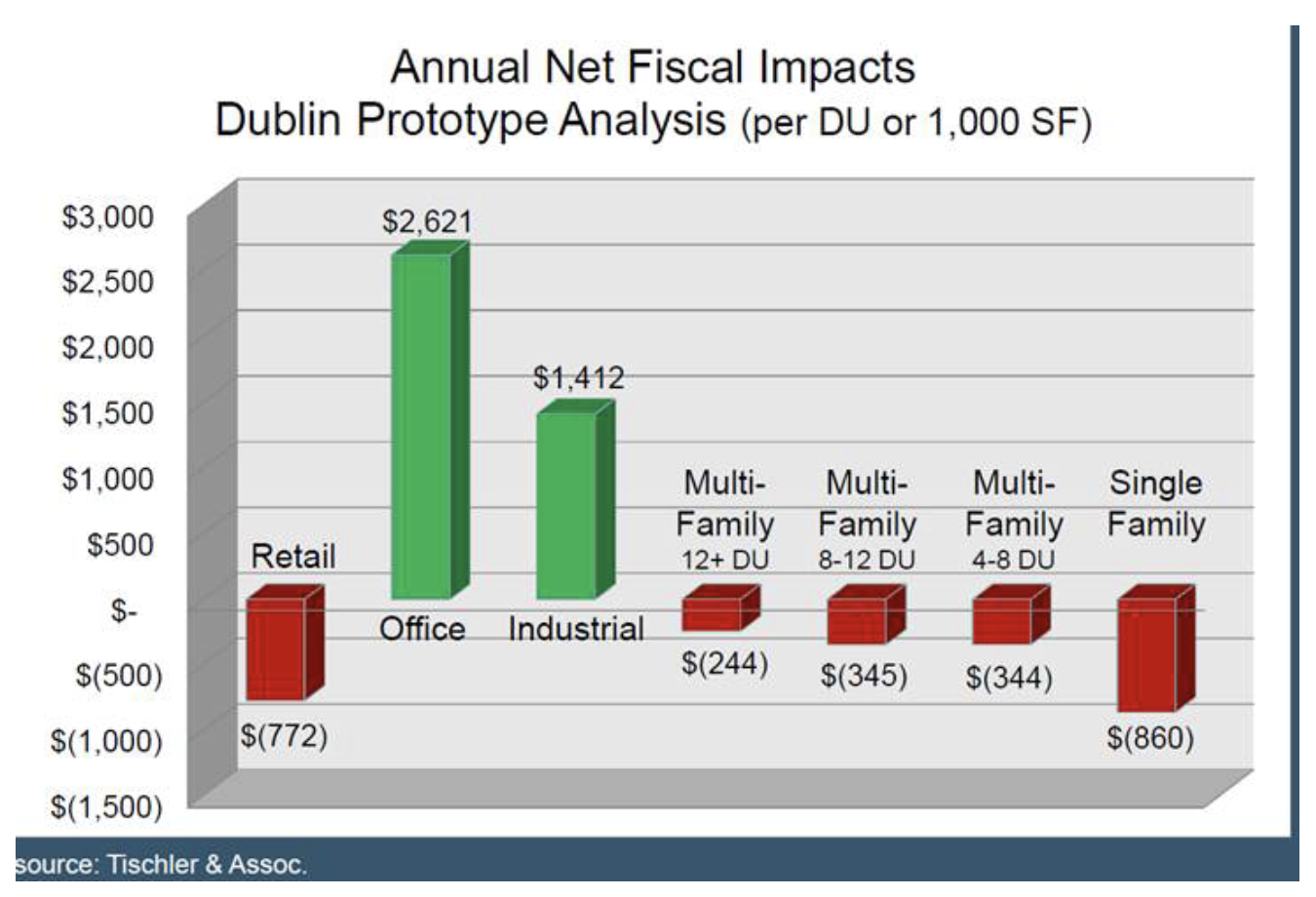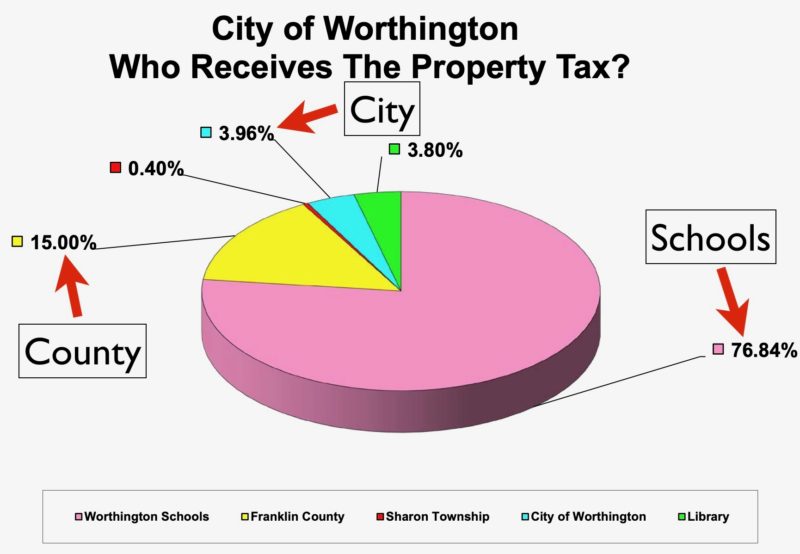Housing and the City Budget

There are reasons that a community may want to promote the development of housing, but a positive impact on the city budget is not one of them. In fact, as the above chart illustrates, all forms of housing have a net negative impact on city finances when service and maintenance expenses are included in the calculation.*
I know this may be surprising to some, but it reflects the fact that the city receives a very small portion of property taxes, as the chart below illustrates (in 2017 the schools received ≈ 76% of property taxes, the county ≈ 15%, and both the city and libraries ≈ 4% each).

I remember speaking with residents back in 2015 who assumed that whatever support there was within the city for the Lifestyle Communities development proposal for 500+ units (apartments, condos, single-family) at UMCH had to be financially driven. I hope this post helps to inform community awareness and future public discussions centered on this and other housing/development issues.
* This chart is drawn from a study conducted years ago for the City of Dublin. I chose to use data from this study because it had the best graphic I could find for this issue. Other more recent studies of the impact of different development forms in Ohio on municipal budgets convey the same general analysis.
** The source of this chart is the City of Worthington.
You must be logged in to post a comment.